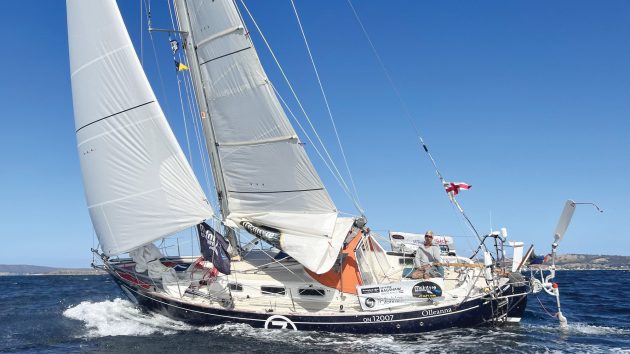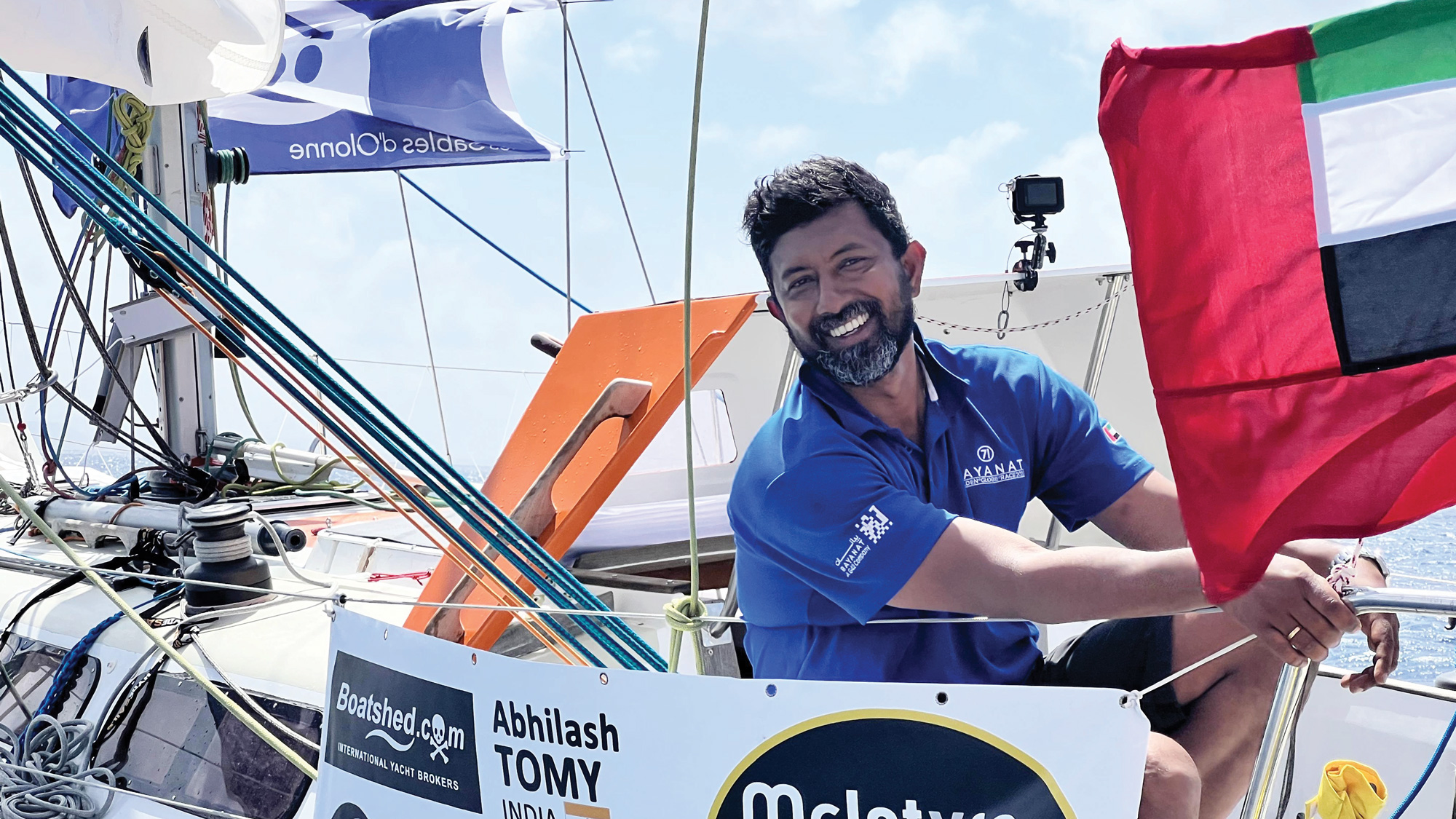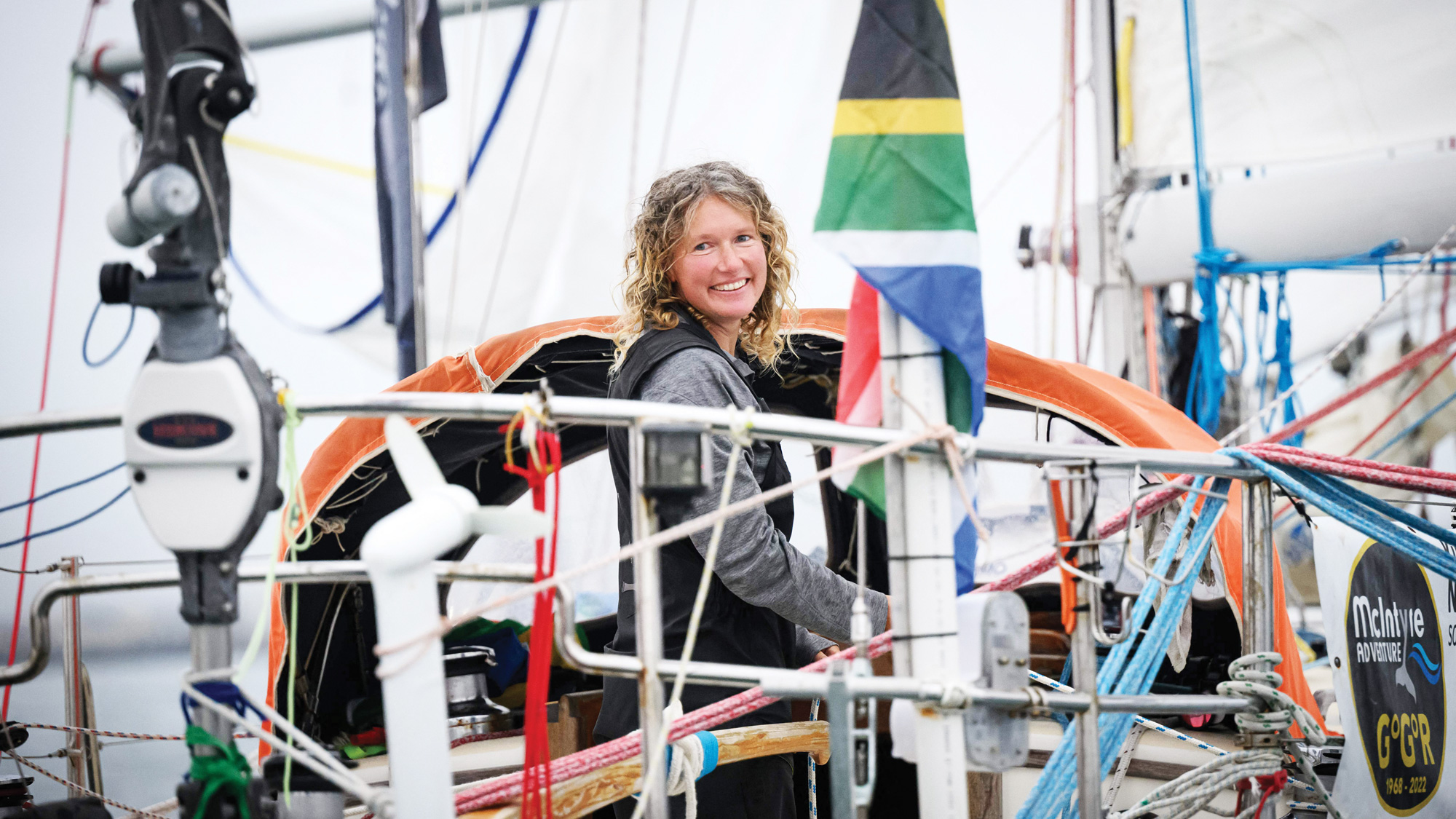Jeremy Bagshaw talks to Yachting Monthly's Katy Stickland about his Golden Globe Race which saw him stop in Hobart and continue the event in the Chichester class
A lifelong sailor, Jeremy Bagshaw started sailing as a child in an Optimist dinghy before moving onto Fireballs and Lasers. He raced offshore while at university and prior to Golden Globe Race, was co-skippering and racing a Farrier 31 trimaran, winning the multihull class in the Governor’s Cup Race.
Barnacle growth on the hull of his OE32 meant the Golden Globe Race ended in Hobart for Jeremy Bagshaw, although he still continued in the Chichester Class for entrants who made one stop. He had antifouled Olleanna with Coppercoat and began noticing a drop in speed after sailing through the Cape Verdes archipelago.
‘You have no idea, the anguish that went with giving away between 20-30 miles every single day to the others. It went on for a couple of weeks and was just mind bending. It was awful but again, one has to try and solve the problem rather than getting angry or disappointed, as that just takes too much energy.’
He spent three consecutive cleaning the hull in the Atlantic, only to discover the growth was much worse when he arrived in Cape Town. Once again, he removed them with his trusty BBQ grill scrapper but the crustaceans returned in the Indian Ocean, making his progress painfully slow.

Serious barnacle growth was the cause of Jeremy’s stop in Hobart.
‘That took some introspection and a lot of talking to myself saying ‘Come on, get over it. You can deal with this’, but it was a sensible decision to haul in Hobart, otherwise I certainly wouldn’t have had enough food or water to get around the rest of the course. And having come to that decision it made sense, so I had to reconcile myself,’ said the South African skipper.
In Hobart, the barnacles were removed and the Coppercoat antifoul was abraided to expose the copper; he suffered minimal barnacle growth after that.
Olleanna was the smallest boat in the fleet, but was not the slowest. Bagshaw used Ocean Passages for the World, cruising guides and an analysis of the 2018 race to ‘develop the framework of my route, and then I just had to adapt it to the actual conditions experienced. I had in mind to sail the least possible distance if that also gave me a good VMG [ the speed of a boat towards the direction of the wind], and I’d like to think I’ve done that.’
Isolation was not an issue for him, as he regularly spoke to the other entrants, but he did miss ‘the opportunities to have some good belly laughs. You can do it over HF radio as you have to press a button and it sounds creepy. I think belly laughs are good for your mental health and it’s one thing that has been missing, as well as the company of women. I love chatting to women and engaging with them, and other than the occasional chat with Kirsten [Neuschäfer] on HF radio, the only other contact that I’ve had has been with with other men and it’s something that was missing in my daily experience.’
Article continues below…
Michael Guggenberger on his 2022-223 Golden Globe Race
Originally, Michael Guggenberger planned to take part in the 2018 Golden Globe Race, but delayed until the 2022 edition to…
Abhilash Tomy on his 2022-23 Golden Globe Race
In 2013, Abhilash Tomy became the first Indian to sail solo, nonstop and unassisted around the world, via the Cape…
Kirsten Neuschäfer on her 2022-2023 Golden Globe Race
Winning the Golden Globe Race meant everything to Kirsten Neuschäfer; her ambition would not only drive her, but would also…
Bagshaw said although he is selling Olleanna, he has become a convert to long keel boats, and will be choosing one for cruising in the future.
‘I’ve seen what sort of conditions it can handle and If I do cruise, it will most likely be off the beaten track, and I’ll be wanting a boat that can handle these sort of conditions. I think I’ve found the design philosophy that works for me. I’ve always sailed light displacement sport boats and dinghies like Fireballs and Lasers and small racing keel boats, but this is a different league.’
Heavy weather sailing tactics
Bagshaw endured more heavy weather than the other entrants – the worst being a Force 10 storm at 36° south just off the Brazilian coast which ‘was not an experience I’d like to have again’ He never deployed warps or a drogue in storms, and instead chose to sail under bare poles with the Wind Pilot windvane steering.
‘Fortunately, every storm or gale I’ve had, the winds and waves have been from the stern, so it has basically been pushing me in the direction I want to go. I’ve always taken a proactive strategy and I’ve reduced sails until even the storm jib was too much, and I went on to bare poles’ I let my Windpilot do the driving, and made sure the dominant swells were kept off one quarter of the boat which gave me the best angle for my course. The Windpilot has been absolutely fantastic. In fact, the harder the wind blew, the better it steered.’
The heavy blows to the boat’s transom during the Pacific storms meant some of the welds on the bracket holding his Windpilot in place began cracking. In an earlier storm, he had lost his sprayhood in a knockdown and cannibalised the leftover parts to brace the bracket, using Spanish windlasses to tension the repair.
Before the start, Olleanna’s new Sparcraft mast was reinforced and strengthened, but the forestay stem fitting failed in the Bay of Biscay on the way to the finish; Bagshaw removed the furling drum from the forestay and took all of his duplicated spinnaker and jib halyards to the bow to secure the mast, before continuing under mainsail and staysail, which slowed his progress towards the finish.
Enjoyed reading this?
A subscription to Yachting Monthly magazine costs around 40% less than the cover price.
Print and digital editions are available through Magazines Direct – where you can also find the latest deals.
YM is packed with information to help you get the most from your time on the water.
-
-
- Take your seamanship to the next level with tips, advice and skills from our experts
- Impartial in-depth reviews of the latest yachts and equipment
- Cruising guides to help you reach those dream destinations
-
Follow us on Facebook, Twitter and Instagram.







